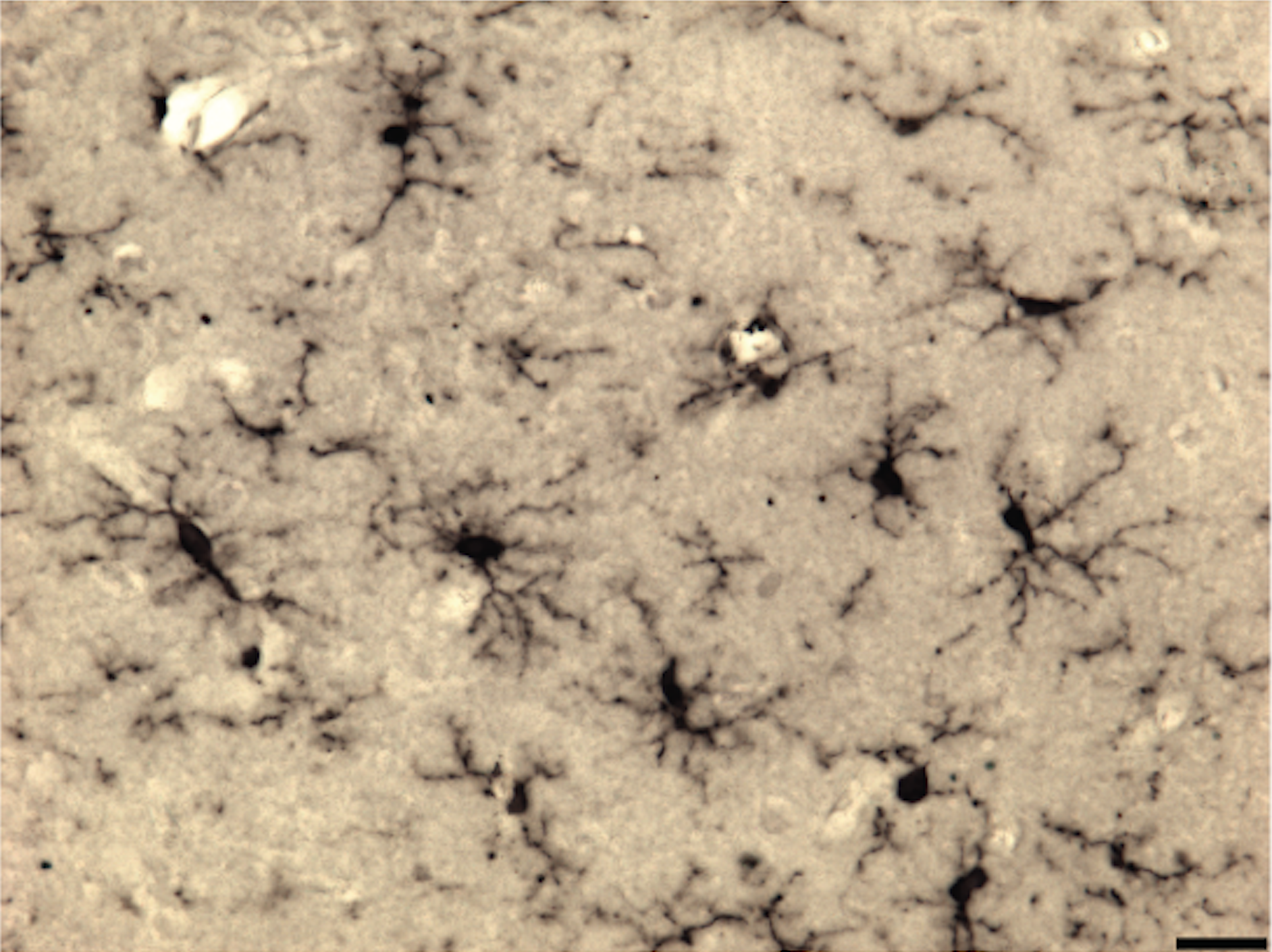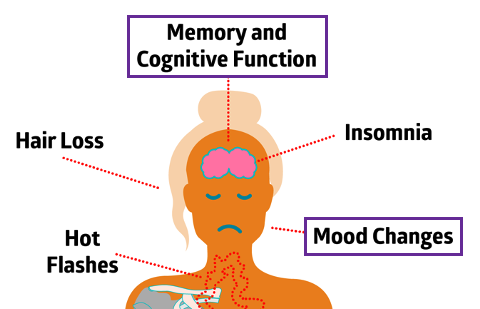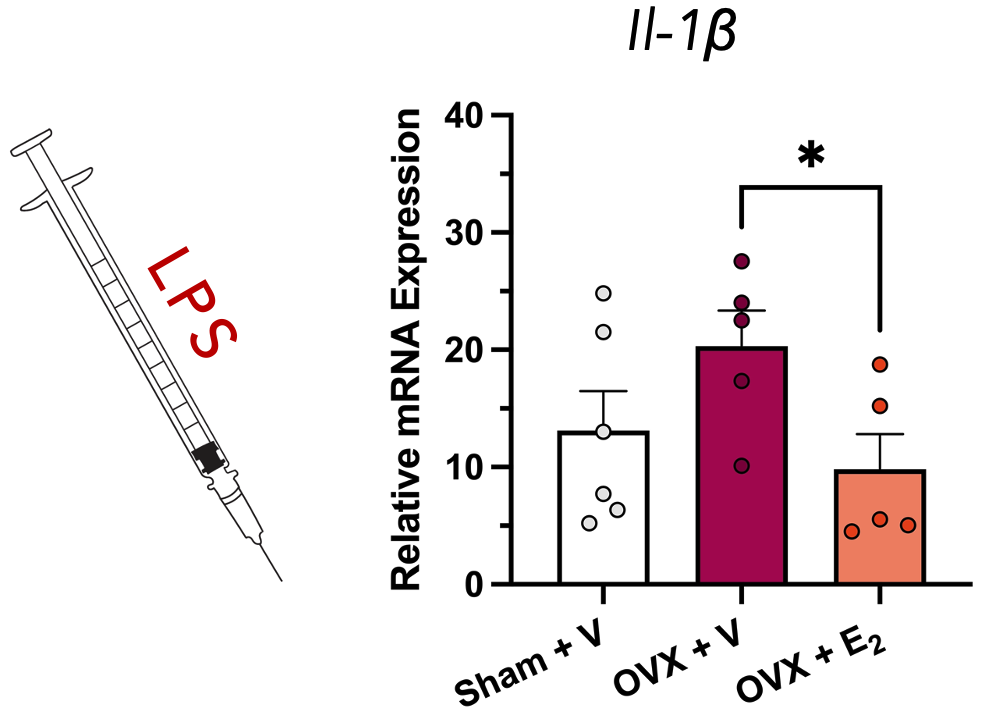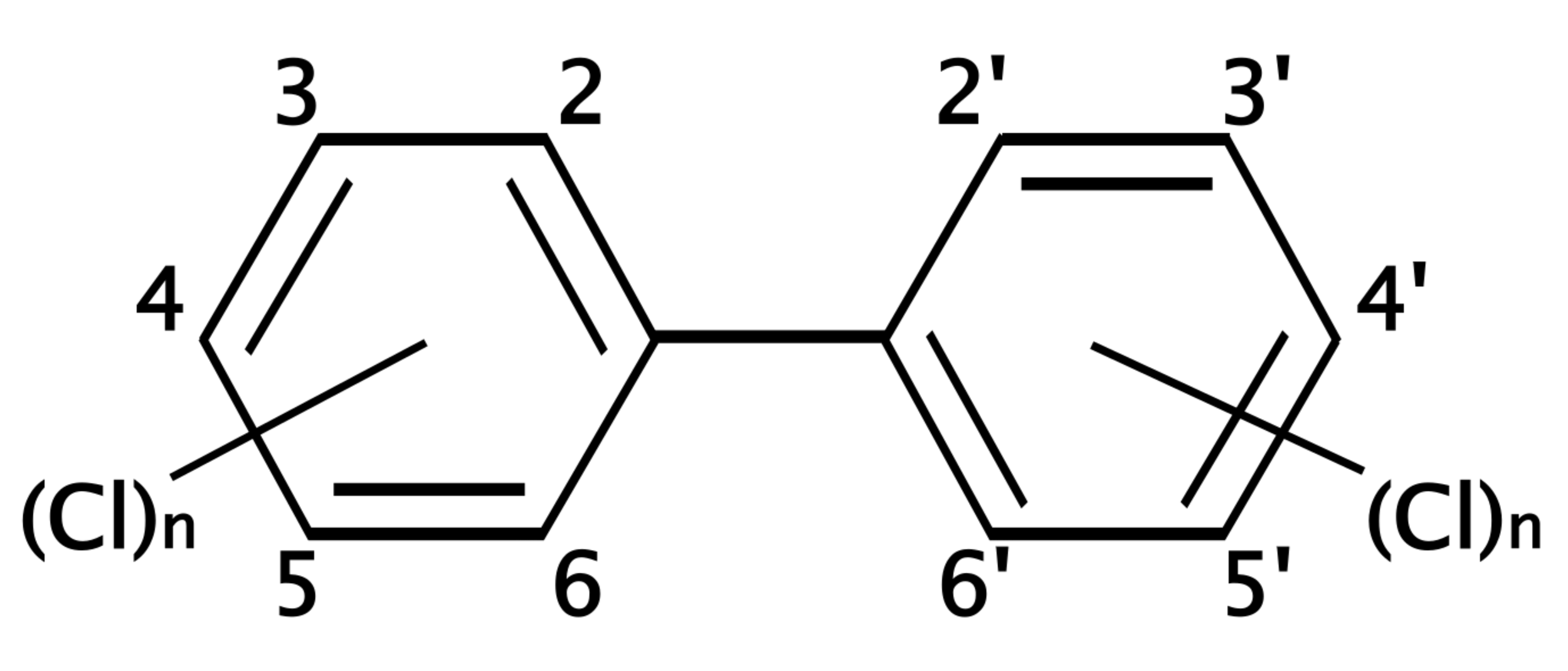Environmental Microbes to Combat Brain Aging
Aging is linked with a gradual, chronic increase in inflammation throughout the body, including the brain. The main cell type responsible for promoting inflammation in the brain is microglia. My doctoral dissertation investigated whether immunization with Mycobacterium vaccae (M. vaccae), an environmental microbe primarily found in the soil, could protect against age-associated increases in microglial reactivity and neuroinflammation. Indeed, M. vaccae immunization in aged rats prevented detrimental changes in microglial phenotype associated with aging (e.g., morphological changes and gene expression of microglial reactivity markers).
Published in Sanchez et al., Scientific Reports, 2022.
Skills: Immunohistochemistry, epifluorescent and confocal microscopy, morphological analyses, PCR, single nucleus RNA sequencing (i.e., transcriptomics), high performance computing, R
Aged Rat + Vehicle
Aged Rat + Mycobacterium vaccae
Representative immunohistochemistry images from the hippocampus using the microglial marker Iba1 suggest differences in microglial soma size and branching due to aging and M. vaccae immunization. M. vaccae administration in aged rats led to decreases in soma size and greater branching complexity consistent with a more homeostatic, anti-inflammatory phenotype.
Estrogen Loss and the Neuroimmune System
Past work evaluating how aging affects the neuroimmune system has predominantly been conducted in males; however, sex differences exist in microglial phenotype. For example, microglia become sensitized and hyperreactive to an immune challenge in the aged male brain, but the brains of aged female rats are more resilient to these changes (Fonken et al., Brain, Behavior, & Immunity, 2018). Therefore, I explored whether loss of estrogens via surgical removal of the ovaries (i.e., ovariectomy) can sensitize the neuroimmune system, thereby exacerbating neuroinflammation and behavioral impairments. My results indicate that estrogen-deficient mice had elevated anxiety-like behaviors and amplified sickness responses that were partly rescued by estradiol administration. Estrogen loss also decreased expression of homeostatic microglial receptors, promoting a more reactive neuroimmune system. After an immune challenge, pro-inflammatory cytokine expression was exacerbated in estrogen-deficient mice, which may contribute to the observed behavioral impairments.
This work was partly funded by an F31 awarded to me from the National Institute on Aging (F31AG072867). Published in Sanchez et al., Brain, Behavior, & Immunity — Health, 2023.
Skills: Immunohistochemistry, epifluorescent and confocal microscopy, morphological analyses, PCR, rodent surgery, rodent behavioral testing
Estrogen loss most commonly arises from natural menopause or surgical removal of the ovaries. Common symptoms associated with estrogen loss include changes in mood and cognitive impairments.
Perinatal Exposure to Endocrine-Disrupting Chemicals and Behavior in Adolescence
Polychlorinated biphenyls (PCBs) are a family of over 200 chemically stable molecules that were widely used in industry from the 1930s until their eventual ban in the late-1970s. Despite this, PCBs are detectable in the body tissues, umbilical cord blood, serum, and urine of virtually all humans and wildlife. PCBs are an example of an endocrine-disrupting chemical. These chemicals can interfere with any aspect of hormone action. In collaboration with Dr. Andrea C. Gore’s laboratory, I was involved in a project to determine whether PCB exposure during the perinatal period in rats (i.e., the time immediately before and after birth) would impact neuroimmune function and behavior during adolescence. Our results indicated that perinatal PCB exposure enhanced neuroinflammation and anxiety-like behaviors in adolescent male rats but not female rats.
Skills: 3’ Tag-Seq (i.e., transcriptomics), R, rodent behavioral testing, rodent husbandry
This is the chemical structure of PCBs. The number and position of chlorine atoms around the phenolic rings determines their half-life, with some PCBs having half-lives of over 20 years in the environment.
The most common sources of PCBs include industrial processes and products made prior to the 1980s, such as old electric transformers, capacitors, and other electrical equipment.






